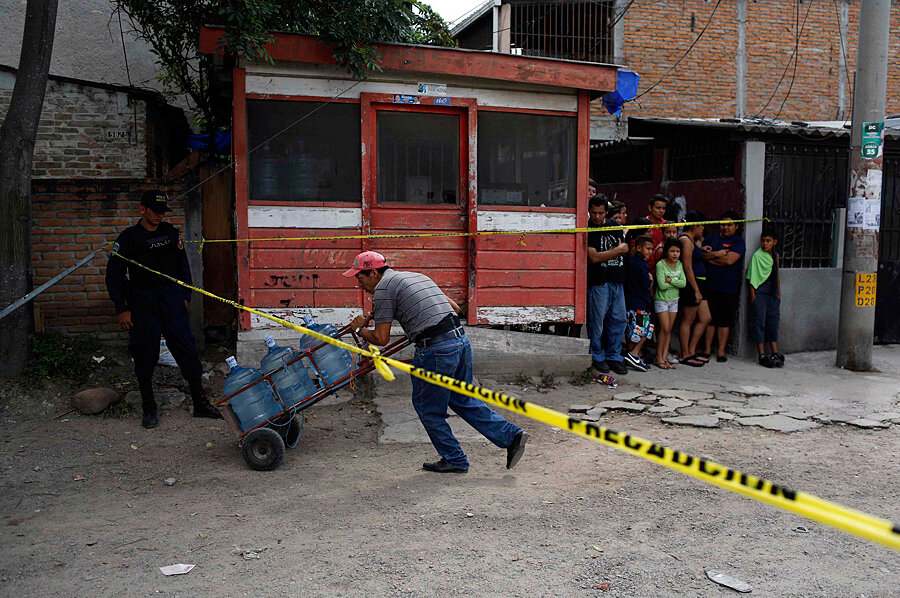Gangs from Central America on the rise in Mexico: Report
• InSight Crime researches, analyzes, and investigates organized crime in the Americas. The views expressed are the author's own.
An easing of tension among the largest Mexican criminal groups has been counteracted by the growing influx of Central America's most notorious gangs, a development that, if continued, could challenge efforts to improve Mexican security for years to come.
As reported by El Diario, a new report from Mexico’s Justice Department details the growing links between the Central American Maras and the nation’s principal criminal groups. Gangs like Barrio 18 and Mara Salvatrucha perform a range of services for gangs like the Zetas, the Knights Templar, and the Familia Michoacana.
In so doing, the Maras in Mexico operate in coordination with their gang counterparts in Central America. This mirrors the expansion of the larger Mexican groups like the Zetas into the isthmus over the past several years, and illustrates the degree to which organized crime in Latin America is a cross-border phenomenon.
The report indicates that the gangs serve as foot soldiers helping the larger groups control territory. Their presence has been most evident in southern states, among them Chiapas, Guerrero, Colima, Morelos, and Mexico State. The report says that there up to 70 different Mara cells operating in Mexico.
InSight Crime Analysis
The presence of Central American actors in Mexico is not without precedent. The southern border between Chiapas and Guatemala has long had a significant presence of Maras, who participate in the human trafficking trade.
Guatemalan ex-special forces, known as Kaibiles, emerged as allies of the Zetas in the early years of the Calderon administration. The Kaibiles, who participated in the Guatemalan civil war that left hundreds of thousands dead, are often blamed for escalating the level of brutality among the Mexican groups; for instance, the surge of decapitations and public mutilations in Mexico coincided with their incursion.
Groups like the Maras fit with the Mexican groups’ shifting tactics and objectives of recent years. A mass of young and violent Central Americans may not be vital to producing methamphetamine or trafficking cocaine, but they would give Mexican gangs the manpower to control a given territory. This in turn could be used as another revenue source, as local businesses are forced to pay protection fees.
The Mara allies could also work with the Mexicans to move undocumented immigrants across the US border, a realm of growing importance to the organized crime groups. Maras would also give Mexican groups a ready supply of foot soldiers should it find itself in a protracted struggle with rivals, a frequent occurrence in recent years.
Since the reporting is short on details, it is not entirely clear how deep the relationship between the traffickers and the Maras has grown, nor that they will continue working together into the future. It also remains to be seen what impact this relationship has on violence in Mexico, but it is unlikely to be positive.
One reason is that the business activities that the Maras specialize in lend themselves to violence, even more so than drug trafficking. One cannot extort without the threat of violence, and the trafficking of undocumented immigrants in recent years has been characterized by kidnappings and massacres. And insofar as they serve as foot soldiers, the Maras can help perpetuate violent conflicts between Mexican groups.
Furthermore, the arrival of another group of criminal actors, whose interests will invariably collide with other established gangs and who will essentially be trying to carve a slice out of a pie of limited size, inevitably serves as a complicating factor. It remains to be seen if the presence of the Maras is a blip in a soon-to-be-forgotten report or if it is part of a broader trend, but if it is the latter, it is unfortunate news.
The greater role of the Maras is consistent with the super gang theory posited by Southern Pulse. This theory, which was first elaborated in 2012, holds that less organized street gangs will take on a larger role in Mexico, and they will soon be the primary drivers of violence. Evidence supporting this paradigm has emerged across Mexico, including many of its most persistently violent cities, and goes well beyond whatever role the Maras play. Should the report’s findings represent a long-term development, the super gang theory would seem to be significantly closer to reality. It is almost inevitable that this cross pollination of criminal expertise will also lead to a growth in sophistication of the Maras.





